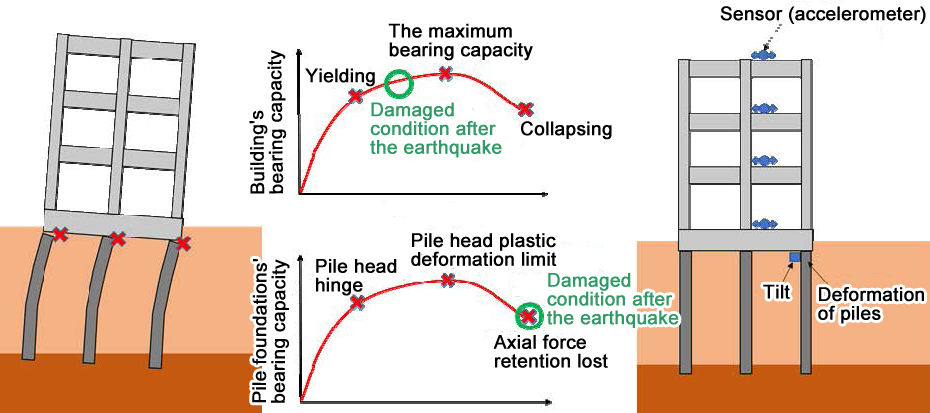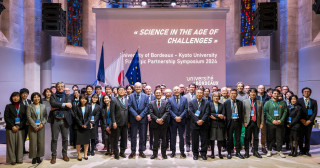Experiment assesses monitoring system for measuring earthquake damage on buildings supported by pile foundations (6 February 2017)
Dr Kazuhiro Hayashi of the Disaster Prevention Research Institute and his collaborators at Kobori Research Complex Inc, the National Research Institute for Earth Science and Disaster Prevention (NIED), Obayashi Corporation, Shimizu Corporation, Taisei Corporation, and Takenaka Corporation have engaged in a "Special Project for Reducing Vulnerability in Urban Mega Earthquake Disasters; Investigation on How to Sustain and Recover Urban Functions", sponsored by Japan's science ministry MEXT.
As part of the project, on 6 February, the team conducted a shaking-table experiment to assess a monitoring system for measuring earthquake damage on buildings supported by pile foundations, using NIED's three-dimensional full-scale earthquake-testing facility "E-Defense". Researchers, constructors, and interested members of the general public were invited to observe the experiment.
Comments from Dr Hayashi
This experiment seeks to assess our monitoring system to measure the soundness of buildings and their infrastructures. We made a building supported by pile foundations subjected to ground motion in order to assess the soundness of the building and the pile foundations using our monitoring system.
Through this experiment, we also seek to grasp the condition of the foundation soil, piles, and the building in detail during and after a seismic shock. This allows us to obtain empirical data on the strong nonlinear interaction between the ground and the building (interaction taking place as each of these undergoes plasticization), as well as on the process of damage to the building and its foundation piles. These data are difficult to obtain through standard observations.
Experiment summary
Dr Hayashi and his team conducted large-scale shaking-table experiments of a high-rise steel frame building in 2013, and of a reinforced concrete (RC) building in 2014, in order to test a system for measuring the soundness of buildings subjected to seismic motion, as well as to examine the damage propagation process leading to complete destruction. In 2015 they performed another shaking-table experiment, this time on ground and pile foundations, to evaluate a system for assessing the soundness of foundation soil, infrastructure, and lifelines.
Aimed at verifying the monitoring system to measure the soundness of buildings and foundation structures, the 2017 shaking experiment was conducted on a RC building supported by underground pile foundations to study building-pile-soil interaction.
The main purpose is to simulate the building-pile-soil interaction, in particular, the behavior of foundation soil and piles just below the building's foundation. Incrementally increased ground motions produced by a shaking table makes it possible to obtain valuable data on the damage process to underpinning piles and buildings.

Figure: Purpose of the experiment
Left: Illustration outlining the earthquake damage on the building supported by piles
Right: Illustration outlining the measurement points and devices to verify the monitoring system





